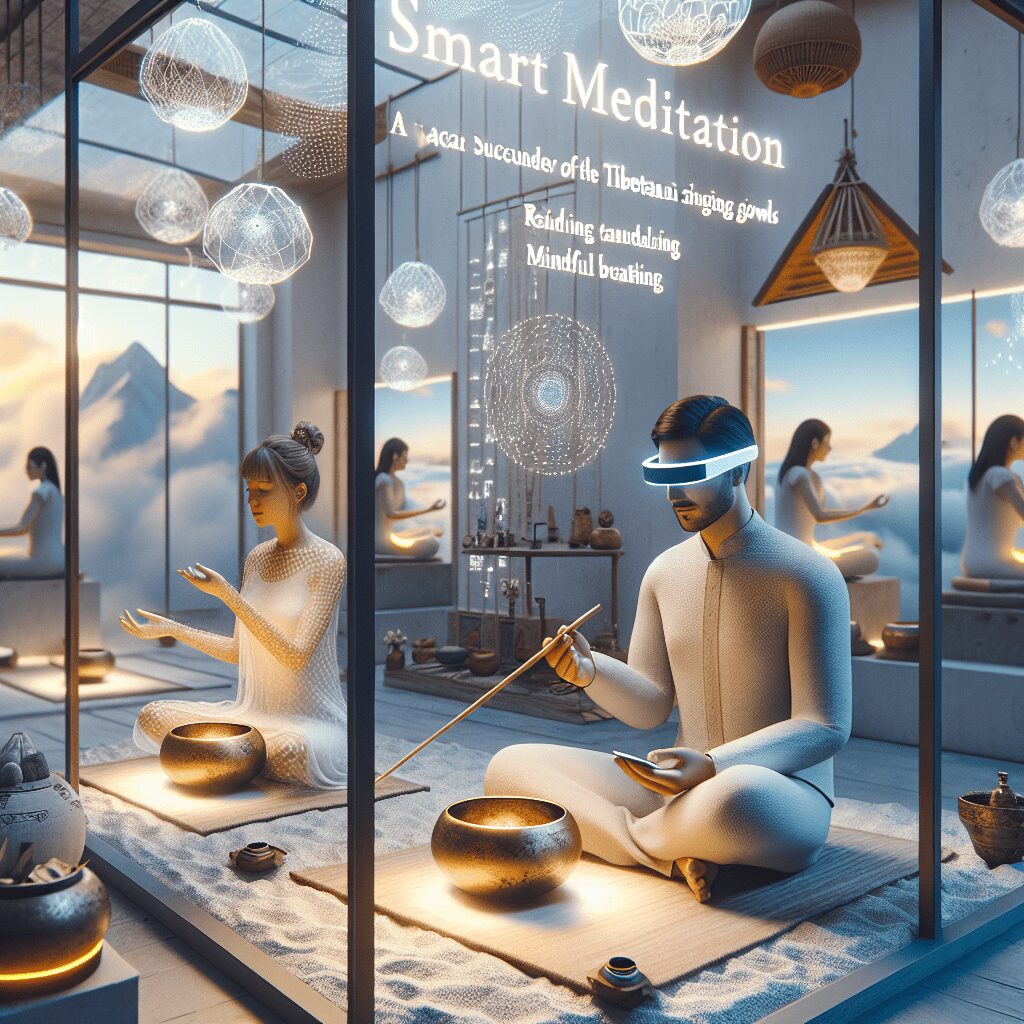
Prioritize your mental well-being daily. Enhance your life by nurturing your mental health with the Smart Meditation app. Break free from stress, alleviate anxiety, and enhance your sleep quality starting today.
How Old Is Meditation?
Unveiling the Ancient Practice: The Age of Meditation
Tracing the origins of meditation is akin to embarking on a fascinating journey through time, leading us back to an era where silence spoke volumes and inner peace was the ultimate treasure. This ancient practice, deeply rooted in the annals of history, beckons us to explore its venerable age and the profound impact it has had on civilizations across the globe.
Meditation Through the Ages: A Timeless Tradition
Believe it or not, meditation is as old as the hills. Scholars and historians place the genesis of meditation at least 5,000 years ago, tracing back to the Indus Valley civilization. Picture this: while mammoths still roamed parts of the Earth and ancient civilizations were in their infancy, individuals were already exploring the realms of consciousness through meditation. Let’s dive a tad deeper into this historical odyssey.
The Chronicles of Early Meditation
-
The Vedas: Our first pit stop is around 1,500 to 1,000 BCE in ancient India, with the sacred texts of the Vedas. Containing detailed practices that closely resemble modern meditation, these texts underscore the significance of meditation amongst early Hindus.
-
Dhyana in Buddhism: Fast forward to around the 6th to 5th century BCE, and we find Siddhartha Gautama (Buddha) cultivating the art of ‘Dhyana’ or meditation, which became a cornerstone of Buddhism. The serenity and insight gained through sitting in stillness and observing the mind laid down the bedrock for Buddhist meditation practices that continue to thrive today.
-
The Tao of Meditation: Meanwhile, in China, Laozi and Confucius (6th century BCE) were sowing the seeds of Taoism and Confucianism, respectively, both incorporating meditative practices. By the time of the Han Dynasty (206 BCE – 220 CE), meditation was deeply woven into the fabric of Chinese spiritual and philosophical thought.
-
Contemplation in Christianity and Islam: The essence of meditation wasn’t confined to Eastern cultures. Early Christian monks practiced contemplative prayer akin to meditation as early as the 3rd century CE. In Islam, Sufism embraced meditation, focusing on the heart’s connection with the divine, around the 8th century.
A Global Tapestry of Stillness
What’s truly fascinating is how meditation, despite its myriad forms and interpretations, became a global phenomenon, transcending geographical, cultural, and religious boundaries. From the Kabbalistic traditions of Judaism to the Shamanistic practices of indigenous peoples, meditation morphed into a universal language of peace and introspection.
Meditation Now: A Renaissance of Awareness
Fast forward to the present, and meditation has undergone a renaissance, emerging as a beacon of tranquility in the tumultuous seas of modern life. No longer confined to the monasteries, ashrams, or temples, it has found a new home in the digital age, with apps and online communities bringing meditation to the masses.
Embracing the Ancient to Navigate the Modern
Why, you might ask, does an ancient practice resonate so profoundly in today’s fast-paced, digitally driven world? The answer lies in the timeless human quest for inner peace, clarity, and a deeper connection with the essence of our being. Meditation, with its remarkable adaptability, answers this call, proving that some things never go out of style.
-
Mindfulness-Based Stress Reduction (MBSR): Developed by Dr. Jon Kabat-Zinn in the late 1970s, MBSR marries mindfulness meditation with contemporary psychology, offering a secular approach to managing stress, anxiety, and chronic pain.
-
Meditation and Neuroscience: Armed with fMRI and EEG technology, scientists are unveiling the profound impacts of meditation on the brain, such as enhanced focus, emotional regulation, and even structural changes that promote a healthier mind.
-
The Digital Meditation Movement: With the world at our fingertips, meditation has become more accessible than ever. From guided meditation apps to online mindfulness courses, technology has bridged the gap between ancient wisdom and modern lives, making inner peace just a few taps away.
In the grand tapestry of human history, meditation stands as a testament to our enduring quest for self-discovery and inner harmony. From its ancient roots in the fertile soils of early civilizations to its flourishing branches in the digital age, meditation remains a sanctuary for those seeking solace from the storm, a bridge spanning the ages, connecting us to the wisdom of our ancestors and the potential within ourselves.
So, the next time you close your eyes to meditate, remember—you’re partaking in a practice as old as civilization itself, a tradition that has weathered the eons, steadfast in its promise of tranquility and insight. Here’s to the ancient art of meditation, may it continue to illuminate the path to inner peace for generations to come.





